Boiler Installation Kemsing
Top New Boiler in Kemsing
Get 3 FREE Boiler Replacement quotes for your project today! Compare profiles, reviews, accreditations, portfolio, etc... and choose the best offer.

R J L Heating Services
Orpington, GBRJL Heating Services is a family run business for over 30 years based just outside Orpington in Kent. We are dedicated to providing a friendly, helpful and professional service. As professional engineers and plumbers in South East London, we can provide a wide range of plumbing and heating services. We have been a family run business for over 30 years and are dedicated to providing friendly, helpful and professional heating and plumbing services. Our heating and plumbing services cover repairs, maintenance and installation and we have a no job is too big or small approach. When you choose RJL Heating, we’ll work closely with you from start to finish to ensure all your requirements are met. Should you be in need of an engineer or plumber in South East London, then be sure to contact us.
- Services
- Why Us?
- Gallery
Get Quote
Efficient Air & Heating
4.740 reviews3469 Cocoplum Circle, Coconut Creek, 33063, GBEfficient Air & Heating is a trusted name in Coral Springs, FL, providing quality air conditioning and heating services since 1993. We are dedicated to complete customer service and ensuring your HVAC system runs its best. Our experienced team offers a wide range of services, including AC installation, repairs, tune-ups, heating repairs, installations, and tune-ups, as well as furnace repairs, furnace replacements, heat pump repairs, air cleaners, dryer vent cleaning, and duct cleaning. We proudly serve homeowners and businesses in Coral Springs and surrounding areas, including Boca Raton, Coconut Creek, Deerfield Beach, Delray Beach, Fort Lauderdale, Lighthouse Point, Margate, Parkland, Pompano Beach, and Boynton Beach.
- Services
- Why Us?
- Our Team
- Testimonials
- Gallery
Get Quote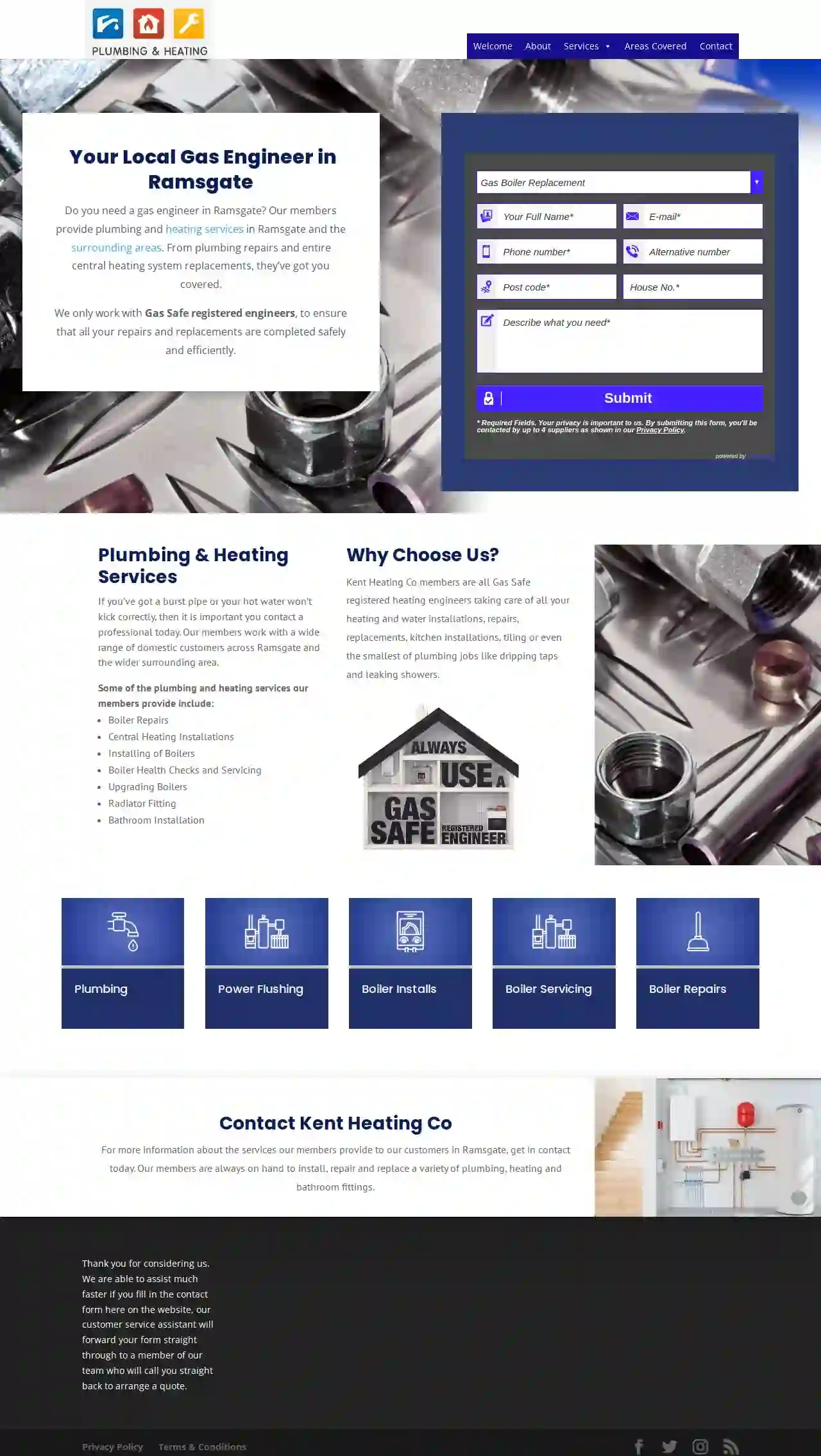
Pegwell Gas & Heating
52 reviewsRamsgate, GBKent Heating Co connects you with Gas Safe registered heating engineers across Kent. We provide a range of plumbing and heating services, from small repairs like dripping taps to full central heating system replacements. Our members are experts in boiler installations, repairs, servicing, and upgrades, as well as power flushing and smart thermostat installations. Whether you need a quick fix or a complete overhaul, Kent Heating Co is here to help.
- Services
- Why Us?
- Gallery
Get Quote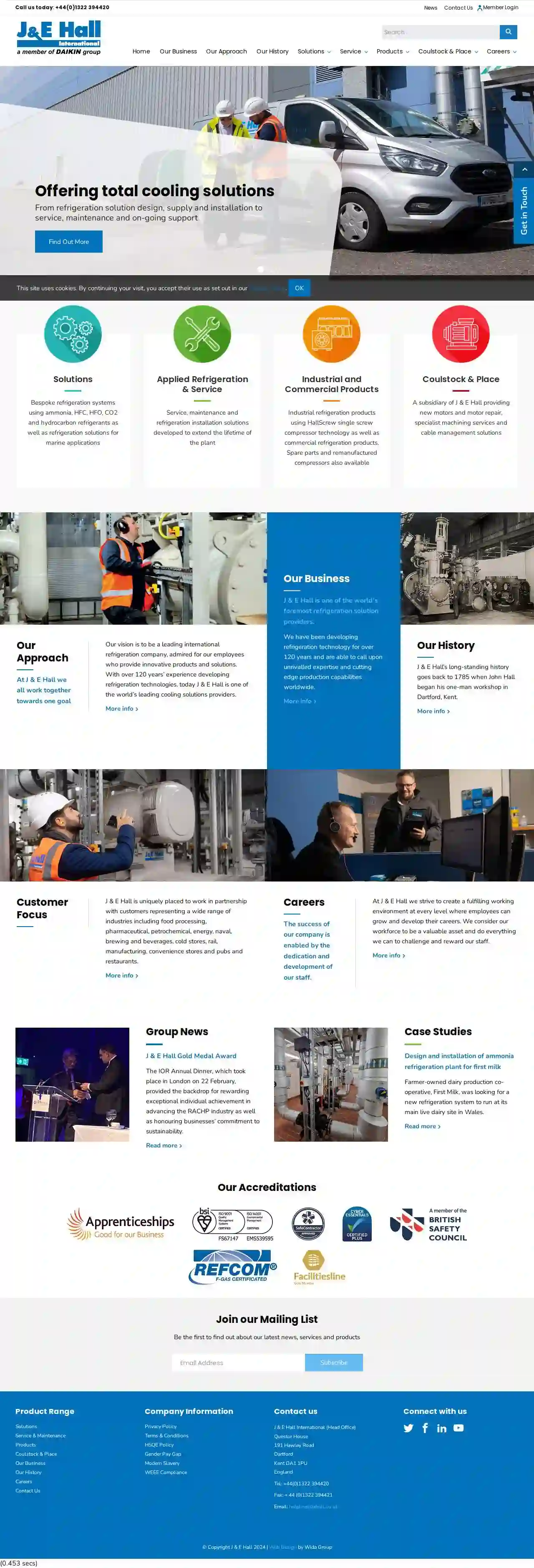
J & E Hall Ltd
12 reviewsQuestor House, 191 Hawley Road, Dartford, DA1 1PU, GBJ & E Hall is one of the world’s leading cooling solutions providers, with over 120 years of experience in developing refrigeration technologies. They offer a comprehensive range of products and services, from bespoke refrigeration systems to industrial and commercial refrigeration products, as well as spare parts and remanufactured compressors. J & E Hall is committed to providing innovative and energy-efficient solutions to meet the needs of their customers worldwide.
- Services
- Why Us?
- Gallery
Get Quote
Callidus Heating Solutions
53 reviewsUnit 1, The Courtyard, Tonbridge, Kent, TN12 6AA, GBWelcome to Callidus Heating Solutions, a division of J Penfold Heating & Plumbing LTD, your trusted local heating service provider specialising in boiler installations and servicing across Tonbridge, Sevenoaks, and Tunbridge Wells. Our dedicated team is here to cater to all your domestic and business heating needs. Get a free quote today and experience unrivalled heating solutions. We have 15+ years of experience with providing a wide area of specialty services. Callidus Heating Solutions is your go-to boiler installation and servicing expert. Our journey began with a simple mission: to provide reliable, cost-effective heating solutions without compromising on quality. With a team of skilled and experienced technicians, we’ve earned a reputation for excellence and integrity in all we do. Our Gas Safe Plumbing Experts are on hand to attend to all your plumbing needs, from minor repairs to major installations.
- Services
- Why Us?
- Accreditations
- Our Team
- Testimonials
- Gallery
Get Quote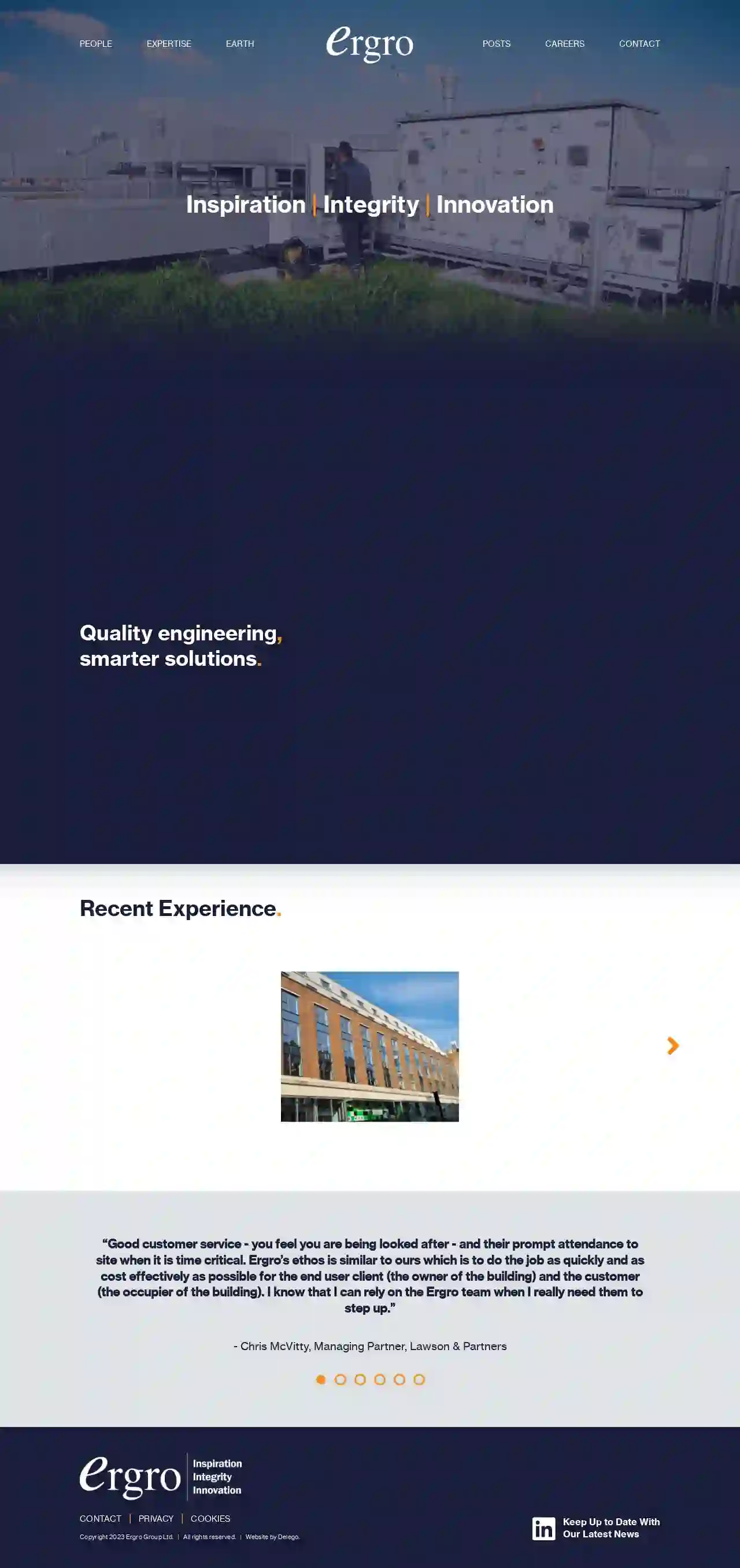
Ergro Group Limited
53 reviewsCamden, London, NW1 9XW, GBAt Ergro, we're dedicated to delivering above-industry standards of engineering. Our DNA consists of a fanatical attention to detail. We link every project, PPM, reactive call-out, and remedial action to individual assets, giving you the level of detail needed to optimise your system. We strive to reduce your carbon footprint and aid in meeting your carbon targets by providing a detailed report on your equipment's operating data, allowing you to make decisions that will lower your operating costs.
- Services
- Why Us?
- Testimonials
- Gallery
Get Quote
The Gas Installers Limited
Boiler Installation Ashford, 123 Main Street, Ashford, TN23 1AA, GBBoiler Installation Ashford is a trusted and experienced team of Gas Safe registered engineers who specialize in boiler installation, replacement, and servicing for both commercial and residential properties in Ashford and the surrounding areas of Kent. With years of experience and a commitment to providing top-quality workmanship, we offer free quotations, affordable prices, and a 10-year parts and labour warranty on many of our boiler installations. Our team of experts can help you design and install the perfect heating system for your premises, whether you're looking for a new boiler installation or simply need your existing boiler serviced or repaired. We work with a range of trusted brands, including Ideal, Vaillant, Worcester-Bosch, Glow-worm, Viessmann, and Baxi, and are certified to install, service, and repair boilers of all types and sizes.
- Services
- Why Us?
- Accreditations
- Gallery
Get Quote
Gas Heating Services
4.520 reviewsShop 6 130 Hagley Road, Halesowen, B63 1DY, GBGas Heating Services (WM) Limited is a Gas Safe registered company based in Halesowen, West Midlands, specializing in gas heating services. We offer a comprehensive range of services, including boiler installations, servicing, full central heating system design and installation, landlord gas inspections, warm air systems, and more. Our team of experienced engineers is dedicated to providing high-quality workmanship and exceptional customer service. We understand the importance of a reliable and efficient heating system, and we strive to ensure that all our clients are comfortable and satisfied with our services. Whether you need a new boiler, a regular service, or repairs, Gas Heating Services (WM) Limited is here to help. We also offer a wide range of plumbing services to our domestic clients, from general plumbing repairs to burst or broken pipes. As a Gas Safe registered company, you can be assured that all our work is carried out to the highest standards of safety and compliance. If you are a landlord, it is essential to ensure that your annual gas safety check is performed by a Gas Safe registered engineer every year. We can provide you with a comprehensive gas safety inspection service to ensure that your property meets all the necessary regulations. Get in touch with Gas Heating Services today to arrange a home visit or call us on 0121 503 0066 if you have any questions. We look forward to hearing from you.
- Services
- Why Us?
- Accreditations
- Our Team
- Testimonials
- Gallery
Get Quote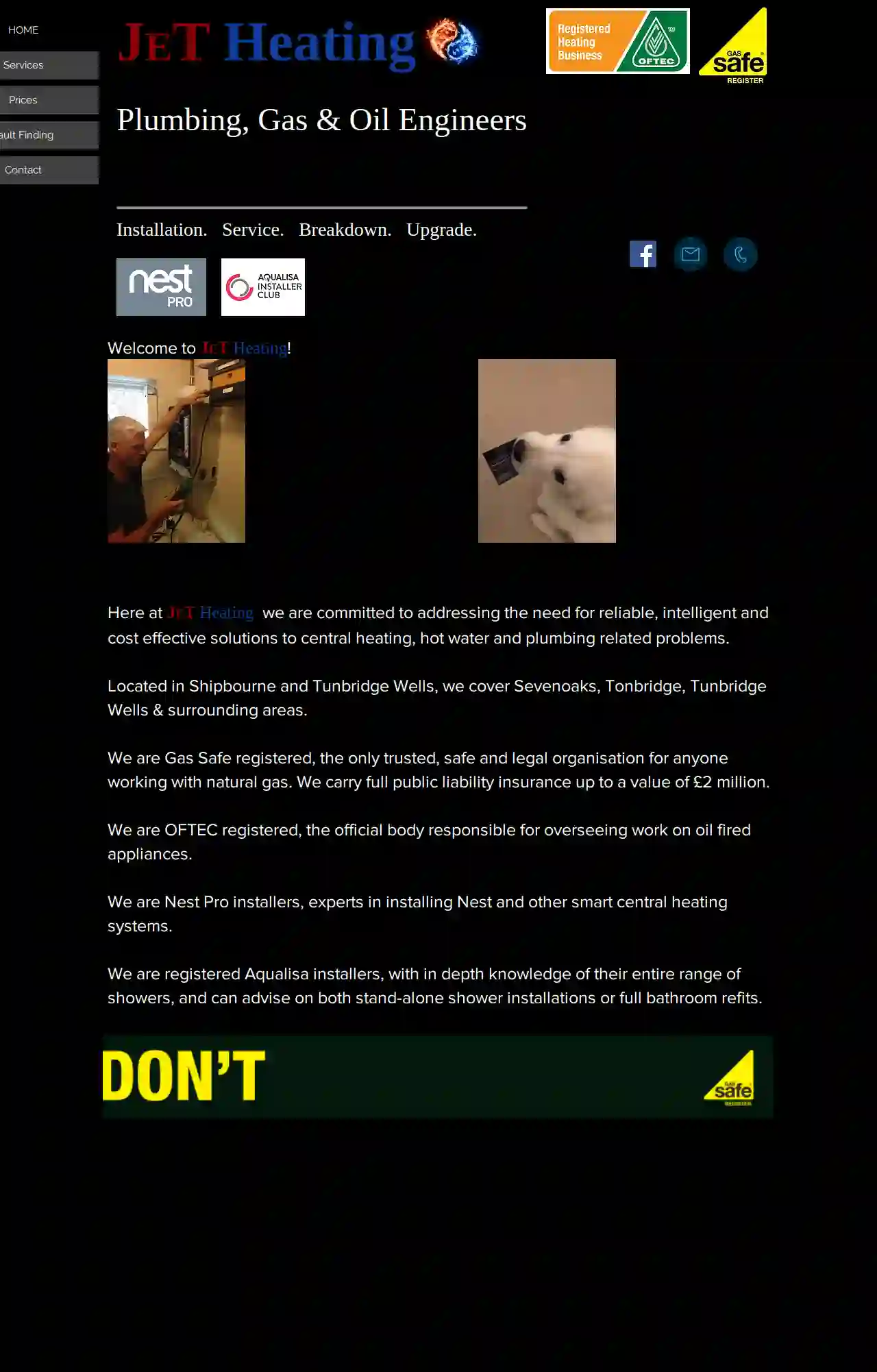
JET Heating
56 reviewsTonbridge, GBHere at JET Heating we are committed to addressing the need for reliable, intelligent and cost effective solutions to central heating, hot water and plumbing related problems. Located in Shipbourne and Tunbridge Wells, we cover Sevenoaks, Tonbridge, Tunbridge Wells & surrounding areas. We are Gas Safe registered, the only trusted, safe and legal organisation for anyone working with natural gas. We carry full public liability insurance up to a value of £2 million. We are OFTEC registered, the official body responsible for overseeing work on oil fired appliances. We are Nest Pro installers, experts in installing Nest and other smart central heating systems. We are registered Aqualisa installers, with in depth knowledge of their entire range of showers, and can advise on both stand-alone shower installations or full bathroom refits.
- Services
- Why Us?
- Accreditations
- Gallery
Get Quote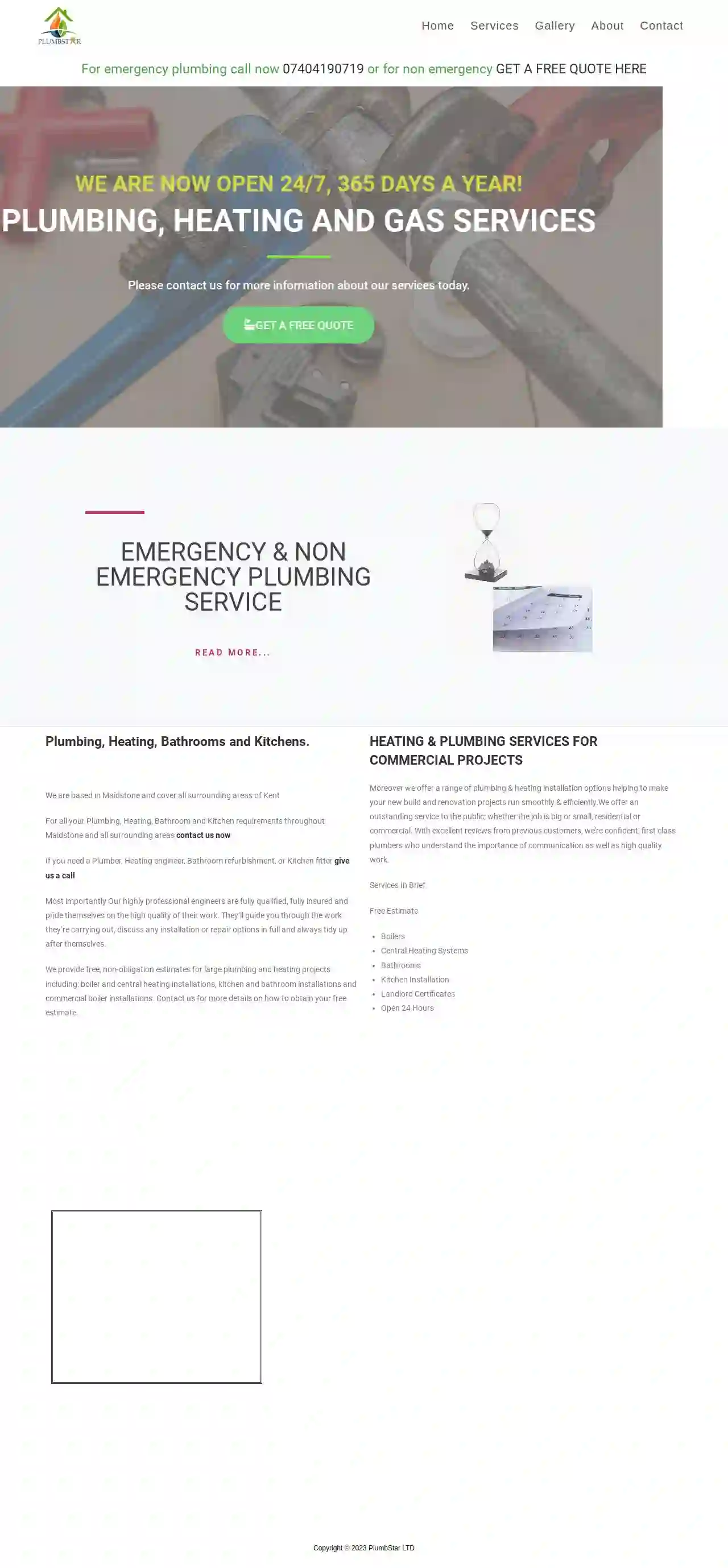
PLUMBSTAR LTD
535 reviewsMaidstone, GBPlumbStar LTD is a professional plumbing, heating, and gas services company based in Maidstone, Kent. We provide a range of services, including boiler and central heating installations, kitchen and bathroom installations, and commercial boiler installations. Our highly qualified and insured engineers pride themselves on their high-quality work and excellent customer service. We offer free, non-obligation estimates for large plumbing and heating projects and are open 24/7, 365 days a year. With excellent reviews from previous customers, we're confident in our ability to provide first-class plumbing services to both residential and commercial clients.
- Services
- Why Us?
- Gallery
Get Quote
Over 12,692+ HVAC Companies registered
Our HVAC companies operate in Kemsing & beyond!
HVACCompaniesHub has curated and vetted the Best HVAC Contractors arround Kemsing. Find a top & trustworthy contractor today.
Frequently Asked Questions About Boiler Installation
- Combi boilers: Combination boilers provide both heating and hot water instantly, saving valuable space. They are compact, efficient, and well-suited for smaller homes or apartments.
- Condensing boilers: Condensing boilers are one of the most efficient types of boiler. They extract more heat from the fuel by condensing the water vapor in the exhaust gases, thus saving energy. Because of increased efficiency, condensing units can help lower your carbon footprint and reduce heating costs.
- System boilers: System boilers heat your central heating system directly and store domestic hot water in a separate cylinder. . They are a good option for properties with multiple bathrooms or high hot water demands.
- Regular boilers: Regular boilers, also known as conventional or traditional boilers, require a separate hot water cylinder, a cold water storage tank, and an expansion tank. They are a reliable option for continuous hot water throughout a home.
What type of boiler is best?
What is a condensing boiler?
What is a boiler's BTU rating?
How much does boiler installation cost?
What type of boiler is best?
- Combi boilers: Combination boilers provide both heating and hot water instantly, eliminating the need for a separate water tank. . They are compact, efficient, and well-suited for smaller homes or apartments.
- Condensing boilers: Condensing boilers are highly efficient . They recycle heat from waste gases, improving energy efficiency. Because of increased efficiency, condensing units can help lower your carbon footprint and reduce heating costs.
- System boilers: System boilers heat your central heating system directly and store domestic hot water in a separate cylinder. . They are a good option for properties with multiple bathrooms or high hot water demands.
- Regular boilers: Regular boilers, also known as conventional or traditional boilers, require a separate hot water cylinder, a cold water storage tank, and an expansion tank. They are a reliable option for continuous hot water throughout a home.